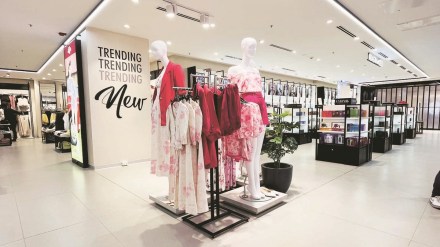That private labels have helped online retailers attract new consumers, improve stickiness and increase market share is well-documented. While grocery continues to be the largest private label segment in the online world, private labels in apparel have not only shot up in sheer numbers but also in terms of the value they generate and their contribution to the revenues of online retailers.
Consider this: Almost 50% of the top brands currently sold on Ajio are Reliance Retail’s private labels, which have, on many occasions, outsold national and international brands such as Levi’s, Superdry or US Polo Assn. on the platform. Reliance Retail’s top private brands Teamspirit, Mix N Match and Avaasa feature regularly among its top-selling brands during festive season sales.
Digital native Myntra houses a whole range of private labels across the price spectrum that contribute up to 35% to its revenue, according to analyst estimates. Many of its owned labels such as HRX and All About You are developed with and backed by celebrities such as Hrithik Roshan and Deepika Padukone, respectively.
Offline too, the trends are similar. At Shoppers Stop, for instance, private labels accounted for 13% of the overall sales and within apparel it contributed 19%. “Private brand contribution in online sales was 20%. Newly launched brands — ethnic inspired men’s brand Bandeya, up 52% versus FY21 while the women Indian wear brand Kashish was up 56% versus FY21. Women’s western brand Insense saw a major growth of 83% versus FY21,” the company said as part of is March quarter and full-year earnings released in April 2022. In May, the department store chain said it had on-boarded actor Sanya Malhotra as ambassador for its select private brands.
Evidently, private labels are a key focus area for retailers — online or offline. But it is in the online segment that the gap between grocery and apparel volumes is narrowing. Or, maybe it’s easier to account for on the digital platform, say some analysts.
The point is this: On the one hand, private label sales have been on the upswing for years, but the soaring cost of living, driven by sharp fuel price rise, is turbo-charging the trend. And on the other, consumers seem unwilling to give up on the convenience of buying clothes online they had experienced during the pandemic-led shutdown. The segment sales are also a factor of comparatively low prices. Growth is also being driven by sales in smaller towns. From a share of 20-25%, Tier II and III have started accounting for up to 40-45% of the apparel and electronics sales in about three to four years.
As retailers like to put it, the reason lies in the margins. So if online retailer margin in categories such as furniture and grocery are around 20% and 10% respectively, that for apparel and cosmetics is as high as 40% and 30% respectively, say players in the segment. Big online retailer players, across product categories, attribute more than 50% of their private label sales to repeat purchases, according to various studies.
That will, in part, explain the slew of launches in the segment after the pandemic and the growing focus of offline apparel retailers on the online channel. Many such brands have outgrown their home platform and started selling through third-party channels. Says Sahil Shah, managing partner, WATConsult, “Many of the apparel brands we work with, or otherwise, had long back started a direct-to-consumer channel to ensure they build their own ecosystem and not rely on these marketplaces forever. And it’s working for sure,” he adds.
Anand Ramanathan, partner, Deloitte India, notes that many of the private labels in the apparel segment are focusing on emerging categories such as loungewear, athleisure, kids wear, etc., in which penetration of branded products is low.
Affordability is the key
Now look at the story from the average consumer’s point of view. They are not necessarily aware if a brand is owned by a platform or a big fashion label. So to ensure consumers return to the platform and there is repeat purchase, the retailer has to keep the buzz alive.
Umashan Naidoo, head, customer and beauty, Trent (which operates Westside), says that as a retailer, one must establish organic traction by building a community and love for the brand. For Trent’s chain of departmental stores, own brands in apparel, footwear and other accessories contribute over 99% of sales. Naidoo adds, “We now have the luxury of being present online. When a brand owns and takes charge of its products end-to-end, it’s in control of its own destiny.”
Points out Rutu Mody-Kamdar, founder of Jigsaw Brand Consultants, “Private labels can be sold by retailers at a lower overhead cost and with more flexible branding strategies as there’s considerable leeway in designing a promotion and advertising or even the packaging of the label.” Now is also the time to take the game a notch higher. Store brands must go from being used purely for their economic merit to helping market the overall online store image.
All said, private labels will remain a tightrope walk for multi-brand retailers and it would be a constant struggle to find that sweet spot between showering the best resources on the store brand and cannibalising sales of a national brand.
Look before you leap
Online marketplaces must keep in mind a few things while selling their own brands
There needs to be a proper balance between private labels and branded products since an excessive focus on private labels might lead to the loss of marquee brands and customers
There are certain product categories with a low affinity for branded products. Private labels of marketplaces can focus on these categories and would have limited pushback from established brands
There shouldn’t be a bias towards any brand while advertising so that the customer can choose the best product possible
Courtesy: Anand Ramanathan, partner, Deloitte India
Also Read: Meta’s Facebook agrees to settle Cambridge Analytica Suit
